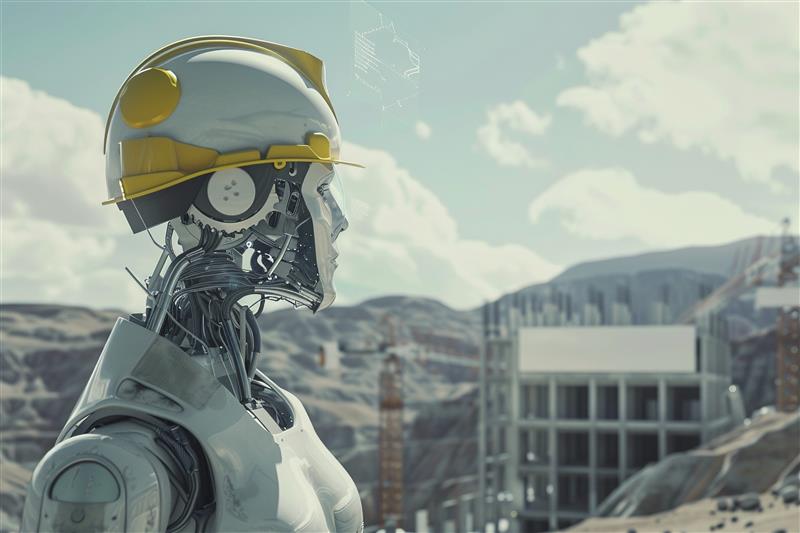The construction site of the future is automated – but not yet autonomous
The construction industry is under pressure: demand for housing and infrastructure is increasing, while at the same time there is a shortage of skilled labour. According to Zeit Olnine almost half of companies in Germany are unable to fill vacancies. At the same time, construction needs to be faster, cheaper and more sustainable. One possible answer to this dilemma is automation – in particular the use of robotics.
Whether bricklaying robots, autonomous construction vehicles or mobile inspection robots: robotics is no longer a dream of the future, but is already a reality in pilot projects and initial series applications. The aim is not to completely replace skilled labour, but to relieve existing teams, cushion bottlenecks, reduce physical strain and increase productivity – especially in repetitive or dangerous tasks.
On the way to the autonomous construction site
Robotics is an important building block on the way to a partially or even fully autonomous construction site. Systems that work with digital models, sensors and artificial intelligence are already able to carry out certain processes independently – albeit usually under supervision or in specially prepared environments.
Examples include the WLTR brick robot from Wienerberger, which carries out precise masonry work, the semi-autonomous Jaibot drilling robot from Hilti or the four-legged Spot robot from Boston Dynamics, which drives around construction sites, documents the progress of construction work and recognises deviations. There are also drones and transport systems that support surveying, monitoring or material logistics.
However, fully integrated systems are currently the exception rather than the rule – there is still a lot of development work to be done in terms of both technology and organisation.
3D printing: rethinking concrete construction
In addition to traditional robotics, 3D printing of concrete is playing an increasingly important role. Projects such as the first 3D-printed residential building in Beckum or the large-scale ‘Wavehouse’ in Heidelberg show how automated printing can drastically reduce construction times. Instead of weeks of manual labour, a building shell is created in just a few days – largely machine-controlled and with significantly reduced labour costs.
Particularly in view of the shortage of skilled labour, 3D printing offers enormous advantages in the construction industry:
- Less manual labour, as the printing process is automated
- Fast construction progress, even with complex geometries
- Resource-saving construction thanks to precise use of materials and less waste
3D printing therefore ideally complements robotics on the construction site – both technologies relieve the burden on existing skilled workers and open up new ways to build more efficiently and sustainably.
Digital models as the basis for robotics
A key success factor for the use of robotics is the availability of precise and structured data. This is where BIM comes into play: digital building models provide the basis on which machines can navigate, interpret their environment and perform tasks.
As-built models and digital twins are becoming increasingly important, especially in existing buildings. They enable robots to access up-to-date information on the condition of the building fabric, plan routes and carry out work steps autonomously or semi-autonomously.
Advantages: More efficiency, less risk
Robots work without fatigue, with consistent quality and can be deployed around the clock. This increases efficiency and can help to keep costs, deadlines and quality under control. Automation can bring tangible benefits, especially for projects under time pressure or in complex inner-city situations.
What’s more, occupational safety increases when hazardous tasks are increasingly taken over by machines. Nevertheless, humans remain indispensable – as planners, coordinators, decision-makers and often also as problem solvers on site.
AI as the next development step
Learning systems can analyse construction files or point clouds and generate BIM models from them – a decisive step towards automating planning.
In addition, AI-supported analyses of sensor data enable dynamic control of the construction site – for example by detecting delays, automatically adapting processes or predictive maintenance.
Actively shaping transformation instead of waiting
Robotics will not completely replace skilled workers, but it will change their tasks. The construction of the future will not do without people, but will be organised more intelligently: with new roles, digitally supported processes and changed requirements.
The use of robotics on construction sites is still often complex, expensive and limited to certain areas of application. But those who start to gather experience and tap into potential today will be able to build more productively, safely and sustainably tomorrow.
Automation is therefore not just a technological option – it is a strategic response to the challenges of tomorrow’s construction.

